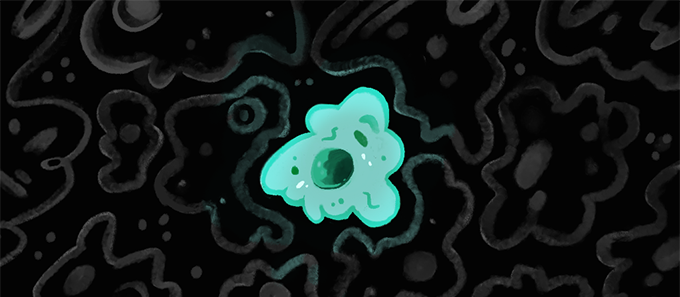
“The horror! The horror!”
Rarely have so few words done so much for so many academics. Uttered by the dying ivory trader Kurtz in Joseph Conrad’s 1899 novella, Heart of Darkness, interpretations range from the political to the psychological, metaphysical and autobiographical. The hermeneutic jungle is as dense as the one the story’s narrator, Marlow, surveys as he steams up the Congo River.
So dense, in fact, that even specialists at times have difficulty finding their way through it. As for interlopers unfamiliar with the terrain, like the story’s clueless “pilgrims” they risk never re-emerging.
It turns out that I am one of those pilgrims.
This semester, I am teaching a seminar tailored to a new research interest: the literary history of nihilism. Although I had not taught Heart of Darkness in several years, I had never forgotten Marlow’s words as he sat one night on a yawl anchored on the Thames: “And this also has been one of the dark places of the earth.” Such an observer struck me as the perfect guide to the tangle of philosophical and moral issues raised by nihilism.
But was I mistaken? I have been asking myself this question ever since I was reminded that there are N-words far more problematic than nihilism.
Before turning to Conrad, I did what I had already done with Turgenev, Dostoevsky and Nietzsche, sketching the historical and biographical contexts to the text. I reviewed 19th-century Europe’s greed and cruelty as it carved up Africa in the name of civilisation, giving particular emphasis to the uniquely unspeakable nature of Belgian rule in the Congo. And I recounted Conrad’s remarkable biography as a Polish exile who commanded French and British merchant ships before, as an adult, learning to command the English language.
I also underscored how his experience as captain of a steamboat on the Congo River suggested the subject and shaped his grim perspective on European claims to civilisation. “The conquest of the earth, which mostly means the taking it away from those who have a different complexion or slightly flatter noses than ourselves,” Marlow remarks, “is not a pretty thing when you look into it too much.”
But I was quickly reminded that not all of Marlow’s words are so enlightened. One of my African American students declared: “I am so tired of reading books that are filled with the N-word.” What was worse, added another, was being told these “classics are good for me”. Citing their Muslim or Asian backgrounds, others also aired their aggravation or, more simply, their anger, not just at the story, but at its author. In their various ways, they echoed the Nigerian novelist Chinua Achebe’s well-known dismissal of Conrad as a “bloody racist”.
This was the sort of moment – engagement replacing enervation – that teachers should welcome. And I did. But I was also afraid that the students were overlooking the text’s complexities. I pointed to the many levels of narrative, noting the danger of confounding Conrad with either Marlow or the storyteller who recounts Marlow’s monologue and who remarks that, for Marlow, “the meaning of an episode was not inside like a kernel but outside, enveloping the tale which brought it out only as glow brings out haze”.
But who wants the haze of uncertainty when the times call for a blaze of clarity? How else to explain one student’s demand to know if I “found the story’s racism inexcusable”? Or another student who, when I asked if we should no longer read, say, Aristotle because he defended slavery, exclaimed: “Well, no, we shouldn’t!” By the end of class, I felt as unsure about the certitudes I had brought into it as I was about the very different certitudes the students carried with them.
Later, I began to reread my copy of Conrad’s story. To my, well, horror, I discovered that while I had underlined the repeated use of words like “gloom” and “dim”, I left unmarked the equally frequent use of the N-word. And that while I had annotated the passages describing the rapacious Europeans as “hollow men”, I ignored Marlow’s remark that the sight of his African boilerman is as “edifying as seeing a dog in a parody of breeches and a feather hat walking on his hind legs”.
In the same week as my class, students at the University of Oklahoma began a sit-in and hunger strike after a history professor quoted a senator’s use of the N-word in 1920 to “convey the depth of racism that existed…when the US Senate debated the League of Nations”.
In my case, I believe my students were right to be angry about Heart of Darkness. But they were wrong, I also believe, to ignore the overarching sense of moral despair and existential unease it evokes. While Conrad’s language was of its time, argued the post-colonial critic Edward Said, the novelist was ahead of his time in understanding that “darkness has an autonomy of its own”.
The trick for a teacher, of course, is to bring that darkness to light, such that students and teachers can see the text – and one another – with a clarity that binds rather than blinds in our modern cultural hothouse. Clearly, I am still finding my way through that particular thicket. But it seems no less clear that both students and professors should agree that we are in this thicket together.
Author Bio: Robert Zaretsky is a Professor in the Honors College, University of Houston.
